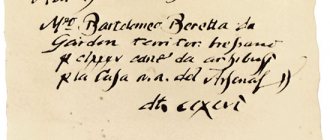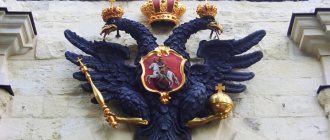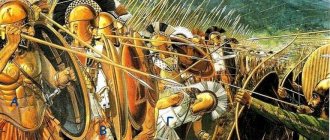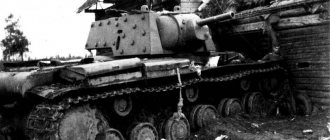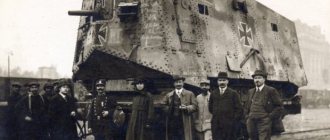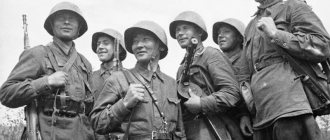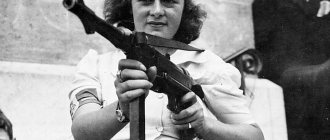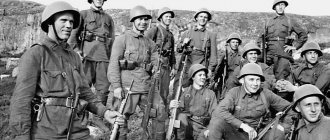Landing at Rotterdam
The landing in the Rotterdam area was not so successful. The first group to land here was the group of Lieutenant Hermann-Albert Schrader - 120 people from the 11th and 12th companies of the 16th Infantry Regiment and the 22nd Engineer Battalion, transported on twelve He.59 seaplanes. Their task was to occupy four bridges over the Nieuwe Maas, connecting the southern and northern parts of the city, as well as the island of Noordaereiland located in the middle of the river.
Almost simultaneously, the 3rd battalion of the 1st parachute regiment (9th, 11th and 12th companies) under the command of Major Schultz and the 2nd battalion of the 2nd parachute regiment (without the 6th company) were thrown onto the Waalhaven airfield . 650 people of the first wave were supposed to occupy the airfield and, within 45 minutes, prepare it to receive aircraft from the second wave of landing forces. The second wave landed at 5:30 Berlin time and included the main body of the 16th Regiment, part of the 2nd Battalion of the 2nd Parachute Regiment, two battalions of the 72nd Infantry Regiment of the 46th Division, as well as divisional elements of the 22nd 1st division, including two companies of anti-tank guns, a battery of six light anti-aircraft guns and three batteries of 75-mm mountain guns. In addition, one platoon of the 11th company was dropped in the area of the stadium and was supposed to go to the aid of the paratroopers who had occupied the bridges. Air cover of the landing and subsequent patrolling over the airfield was carried out by heavy Meserschmitt Bf.110 fighters of the operational group of Major General Richard Putzier from the 2nd Air Fleet.
Before landing, the airfield was attacked from a strafing flight by He.111 bombers, led by the commander of the KG 4 bomber squadron, Colonel Martin Fiebig. Their task was to suppress fire resistance, but at the same time keep the runway and airfield structures intact, so the attack was carried out with light 50-kg bombs. The large Waalhaven airfield before the war was used mainly as a civilian airfield, so its air defense was relatively weak - 12 heavy anti-aircraft machine guns, two 20-mm machine guns and seven 75-mm anti-aircraft guns, the ammunition of which allowed firing at a distance of at least 1000 m But at the airfield there was a squadron of heavy Fokker G.1 fighters (analogues of the German Bf.110).
Having landed from seaplanes, the paratroopers captured the bridges, but they failed to occupy a bridgehead on the northern bank. True, the Dutch were not able to dislodge the enemy from their positions, despite artillery support from the gunboat Z-5 and the destroyer TM-51.
Village of Falkenburg
Lieutenant Colonel Buurman considered his main task to be the destruction of the enemy in the Falkenburg area. In the morning, he ordered a reinforced company group concentrated in the Katwijk area to attack the village from the north. The attack was supported by 120 mm howitzer fire, which seriously affected the population of Falkenburg. But a barrage of fire played its role - Dutch infantrymen burst into the village and made their way to its center. However, here they themselves came under artillery fire - this time Falkenburg was fired upon by 75-mm cannons of the 6th Artillery Regiment from Oegsgeest (north of Leiden). Van Andel's fears were confirmed again - the main problem of the Dutch army was not the morale of the soldiers, but the poor performance of the headquarters and the lack of combat experience among the officers.
Dutch 120-mm howitzer "Bofors" in May 1940. Such guns were in service with the 3rd Division of the 2nd Artillery Regiment, operating in the area of the Falkenburg airfield. waroverholland.nl
In the evening, the 1st Battalion of the 9th Infantry Regiment, transported by truck from Haarlem, arrived at Buurman's disposal. On the way, he came under a German air raid - bombs destroyed a bus and two trucks of the 1st company, killing 22 people and wounding about 30. Nevertheless, the battalion was immediately thrown into an attack on Falkenburg. The attack was carried out by two companies: one was supposed to move from Katwijk along the road along the left bank of the Oude Rijn, the other was to go through the fields, cross two small canals and attack Falkenburg from the northwest.
Alas, the offensive was not complemented by an attack from the opposite side (from Leiden), where there were also combat-ready troops (they were subordinate not to Lieutenant Colonel Buurman, but to the headquarters of the 1st Army Corps, and did not receive an order to attack). Three armored vehicles (Swedish Landsverks), sent here during the day, also did not take part in the battle, standing on patrol at the Haagse-Schove bridge all evening. As a result, with a noticeable numerical superiority of the Dutch troops, only a part of them were involved in the offensive.
Armored car "Landsverk" L-180 (Dutch designation - M38), abandoned by the Dutch during the retreat. This vehicle weighing 8 tons was armed with a 37 mm or 20 mm automatic cannon and two Madsen machine guns. aviarmor.net
The attack was supported by two sections of heavy machine guns located on the right bank of the Oude Rijn, as well as all three batteries of the 3rd Division of the 2nd Artillery Regiment - twelve 120-mm field howitzers. Artillery preparation began at 18:00 and again covered residential areas. Three shells hit the church where the Dutch prisoners were gathered (6 people died). The infantry went on the attack, knocking down the forward patrols on the outskirts of the village, but, having burst into it, was again stopped by German machine-gun fire. Soon Me.110 fighters arrived to support the defenders. The offensive again floundered, and with the onset of darkness the Dutch infantry rolled back.
Skydivers in the dunes
By the night of May 10-11, Colonel Geyser's paratroopers, driven out from the airfield, retreated in an organized manner to the village of Falkenburg. About 300 captured Dutch soldiers remained in the hands of the Germans, as well as about a hundred wounded - in fairness, it should be noted that they received assistance on an equal basis with the German wounded.
The task of finishing off the Germans in the Falkenburg area was given to the 9th Dutch Infantry Regiment under Lieutenant Colonel Buurman. It was assigned several more battalions from various units, as well as two artillery divisions. In addition, Buurman's area of responsibility included a vast area southwest of the airfield between Katwijk and Scheveningen. For 20 km along the deserted coast there is a smooth beach, turning into sand dunes covered with sparse forest and extending 4-5 km from the coast. The only populated area for many kilometers is the village of Wassenaar, located a kilometer from the Amsterdam-The Hague highway. The Germans used the beach for landing planes, and the deserted hilly space for the secret concentration of paratroopers.
Falkenburg airfield and its surroundings. waroverholland.nl
On the evening of May 10, the Dutch took control of the Amsterdam-The Hague highway, occupied Wassenaar, and then Buurman received orders to send three battalions from Katwijk to clear the dunes. Alas, the headquarters of the 4th Infantry Regiment, busy eliminating the paratroopers in Falkenburg, was unable to coordinate the actions of units from different regiments. What General van Andel feared happened - without receiving timely orders, the battalions moved at random, and their commanders were lost in difficult situations.
Advancing on the left, the incomplete 1st Battalion of the 1st Infantry Regiment (two companies) went deeper into the dunes for a couple of kilometers and camped for the night west of Wassenaar, without setting up reliable security. Before dawn, it was suddenly attacked by the Germans and destroyed: out of 350 people, 22 were killed (including the battalion commander), about 200 more were captured, and the rest fled. German losses amounted to 2 people.
The 2nd Battalion of the 9th Infantry Regiment (three companies), marching on the right flank in marching order, was ambushed in the dark, its forward units (including an anti-tank platoon) were defeated and captured. The main part of the battalion deployed into battle formations and began the battle.
The 1st battalion of the 4th regiment (two companies) moving in the center was unable to establish contact with its neighbors and, having stumbled upon the enemy, immediately went on the defensive. Only in the morning did his commander manage to establish contact with the 2nd battalion located to the west.
At 14:00 both battalions received new orders to attack. At that moment, three Junkers transport vehicles appeared in their rear, mistakenly dropping cargo for the landing on territory already occupied by the Dutch. However, fear has big eyes: the Dutch commanders decided that paratroopers were landing in their rear, and ordered their soldiers to retreat back to Katwijk, leaving prisoners and rich trophies in the hands of the enemy.
Because of this confusion, it was necessary to cancel another attack, which was supposed to begin with the forces of three battalions from the south (from the direction of The Hague). The Dutch command decided that without support from the north and without information about the enemy’s location, the offensive would not bring success. In addition, the Dutch reserves were already stretched, and three battalions could be useful elsewhere.
Panic in The Hague
One of the reasons for the Dutch reluctance to send three fresh battalions into the dunes was the complete confusion in the Hague area. Panic reigned in the city, rumors about paratroopers, saboteurs and the “fifth column” spread. Van Andel's commandant's office and headquarters were inundated with reports of the appearance here and there of enemy soldiers in disguise, attacks by traitors and saboteurs. Here is what Louis de Jong, the author of a study on German collaborationism in Western Europe, writes about this:
“Soon rumors spread that only some of the paratroopers were dressed in German military uniforms, while the rest looked like farmers, policemen, postmen, drivers, and priests. Some were even dressed as nuns. How to distinguish ours from strangers? Perhaps the unknown messenger from the butcher's shop is carrying hand grenades in his basket?
Groups of Dutch soldiers cruised around on false calls, finding nothing and only increasing the panic. There have been recorded cases of shooting at windows from which signals were allegedly given to enemy aircraft, or at passersby in whom someone noticed a weapon. Here and there Dutch patrols exchanged fire with each other. Already on the morning of May 10, checkpoints began to appear on the streets of The Hague, and their number became more and more numerous. Countless checks and mutual distrust among the military made the movement of troops extremely difficult. Even Foreign Minister Van Caleffens was detained (later released following a call from the General Staff).
The High Command reports of May 11 also increased the panic - they several times mentioned German saboteurs dressed in civilian clothes or Dutch military uniforms. Mass arrests of Germans and citizens known for their pro-German sentiments added fuel to the fire. Louis de Jong notes:
“Each new sign of fifth column activity further increased the tension. The soldiers had the impression that German paratroopers were landing everywhere, and that there was not a single city or village in the country where residents were not shooting from houses, where light signals were not given at night <...> On May 11, such a thing was going on in the streets of [The Hague]. shooting, that the troops were under the impression that they had to suppress a general uprising of the Dutch Nazis.”
Under these conditions, General van Andel simply did not have sufficient forces that could be aimed at eliminating the remnants of the landings.
Three airfields
The Germans suffered the greatest losses at the Eupenburg airfield on the southeastern outskirts of The Hague. About a thousand paratroopers were captured here alone; the surviving paratroopers were scattered over a large area around The Hague, Delft and all the way to Rotterdam.
In the area of the Falkenburg airfield near Leiden, about 900 people continued to defend themselves - mainly from the 3rd battalion of the 47th airborne regiment. In addition, some transport planes were able to land on the sandy beaches between Katwijk and Scheveningen and land paratroopers here. Thus, up to a thousand more German soldiers gathered in the dunes southwest of Katwijk.
In Ockenburg, southwest of The Hague, by the evening of May 10, the Dutch managed to knock the Germans out of the airfield, but up to 800 paratroopers retreated into the coastal dunes in an organized manner. It was here that the commander of the 22nd Airborne Division, Major General Count Hans von Sponeck, was located with his headquarters.
The surrounding area of The Hague and three airfields (marked with propeller signs): Falkenburg (top), Ockenburg (bottom left), Eupenburg (bottom right). waroverholland.nl
On May 10, the German airborne troops suffered enormous losses: they lost over 1,500 people as prisoners alone (the Dutch managed to take 1,350 of them to England before capitulation). On this day alone, the Germans irretrievably lost 175 transport aircraft, all open spaces, fields and roads around The Hague were filled with landed Ju-52s - most of them would never take off.
Nevertheless, the landing in the Hague area played a huge role in the outcome of the entire campaign. The Dutch command was not demoralized by the air strike, but it did not know how many forces the enemy had left, where and when to expect the next landings; Finally, the combat capabilities of Sponeck’s surviving forces were also a mystery to him. The commander of Fortress Holland, General Jan van Andel, was at a loss, not knowing what action to take. In addition, his chief of staff, Lieutenant Colonel Kools, was killed on the morning of May 10 on the highway near Falkenburg, as a result of which the work of the headquarters was disorganized.
The first day of battles showed the high fighting qualities of the Dutch soldiers, but at the same time revealed problems in command and control of troops at the level from the battalion and above. This was caused not only by insufficient training of officers, but also by more prosaic reasons, in particular, an acute shortage of field communications equipment, which did not make it possible to control units on the march. As a result, Dutch battalions and regiments could “fall out” from command control for several hours, which was unacceptable in a rapidly changing situation. The Dutch generals, brought up on classical examples of strategy, were greatly unnerved by the phenomenon of “fog of war,” especially maneuver warfare, using “vertical envelopment.”
Lieutenant General Jan van Andel, drawing from 1939. rkd.nl
On the evening of May 10, General van Andel gave an order that seemed rather strange, given his poor knowledge of the combat situation: he authorized action against groups of German paratroopers with forces of no more than a company. If a German group was discovered anywhere that could not be destroyed by forces within the company, it was only blocked, but no action was taken to eliminate it. As a result, the main forces of the 1st Army Corps, defending the heart of the country, were constrained by the need to counter the remaining paratroopers, but at the same time could not completely finish them off.
The Queen leaves the country
On May 12, the fighting with paratroopers around The Hague subsided, and calm reigned in the areas of Eupenburg and Ockenburg. In the Falkenburg area and in the dunes near Wassenaar, Dutch attacks also ceased (in accordance with the order of General van Andel, which prohibited the separation of large units and the use of forces of more than a company against the paratroopers). Only the Dutch artillery continued to shell the village of Falkenburg, gradually turning its center into ruins.
On the same day, the Dutch began to transport German prisoners of war (mainly pilots and paratroopers) from all fronts to the port of Ijmuiden; On May 13, the prisoners were sent to England. On the evening of May 12, Crown Princess Juliana with her two children and Prince Consort Bernhard left for England from here, and the reigning Queen Wilhelmina moved from The Hague to Hoek van Holland. She also left the country the next morning on board the British destroyer Hereward. A few hours later, she was followed by members of the government who boarded the British destroyer Windsor.
Queen Wilhelmina speaking on radio from Great Britain, summer 1940. historiek.net
On the evening of May 13, the command of the Dutch army for the first time proposed that the Germans begin negotiations on surrender, but the Dutch soldiers continued to fight. As Hitler stated on the morning of May 14 in Directive No. 11 addressed to the troops,
“The combat effectiveness of the Dutch army turned out to be higher than expected.”
German raid on Overskhe
Thanks to the confusion in The Hague, the paratroopers driven out of the Ockenburg airfield were left unattended for some time. This respite was enough for General von Sponeck to establish control of the troops west of Loosduinen and prepare them for the march. The general rightly decided that he did not have the strength to storm the capital, and adopted another plan: to fight his way to the southeast to join the main forces of General Student in Rotterdam. The raid was made easier by the fact that along the way, especially along the Rotterdam-The Hague highway, there were many scattered groups of paratroopers.
General von Sponeck is digging a trench. 10 or 11 May 1940, Loosduinen area. www2incolor.com
On May 11, about 350 people left the vicinity of Loosduinen along with von Sponeck. At Delft they were joined by about a hundred paratroopers who survived the defeat at the Eupenburg airfield, then on the road to Rotterdam - about 300 more paratroopers. The Dutch practically did not impede the German advance, with the exception of several air raids by Fokker CV light reconnaissance aircraft and Fokker D-XXI fighters. Only at the very beginning of the march, in the small village of Wateringen, 5 km southeast of Okenburg, the path of the paratroopers was blocked by a strong Dutch detachment with two armored vehicles. Sponeck tried to attack him on the move, but lost three men and decided to bypass the enemy.
By the morning of May 12, Sponeck’s group, having traveled two dozen kilometers, occupied the town of Overshie (now the northwestern outskirts of Rotterdam). The bridges over the Nieuwe Maas, captured by Student's paratroopers on the morning of May 10, were now about 5 km away. Initially, about 750 paratroopers gathered here, but gradually, due to scattered groups that came out here, their number grew to a thousand.
USSR - CIS - Veterans of the Armed Forces and Airborne Forces.
On December 8, 1991, the Soviet Union disappeared. The heads of the RSFSR, Belarus and Ukraine - B. Yeltsin, S. Shushkevich and L. Kravchuk - signed the “Belovezhskaya Agreements” on the termination of the existence of the USSR and the creation of the Commonwealth of Independent States (CIS).
Against the backdrop of complete anarchy and impunity, armed clashes on ethnic grounds break out in most countries of the former USSR. Ossetians fight with Georgians (1991-1992); Georgians with Georgians (1991-1993); Armenians with Azerbaijanis (1991-1994); Abkhazians with Georgians (1992-1993); Ossetians with Ingush (1992); Moldovans with Pridnestrovians (1992); Tajiks with Tajiks (1992-1997); Chechens with central government (1994-1996). In the republics of Central Asia, representatives of Slavic nationalities turned out to be useless and forgotten.
The collapse of the USSR, the economic crisis, a sharp drop in living standards and the unstable situation in the country as a whole in the early 90s. have become push factors stimulating citizens to leave its borders. Mostly Jews emigrated from the European part of the countries that became the successors of the USSR, and Germans from Kazakhstan and Central Asia. Not only ethnic Jews/Germans left, but also members of their families and relatives of other nationalities. In this way, veterans of the Armed Forces of the USSR / CIS began to disperse all over the world, among whom airborne veterans made up their percentage. Among the settlers there are many officers and warrant officers of the armed forces who remained outside the army environment due to the abolition of the Warsaw Pact, due to the collapse and reform of the Army. In the national armies of the CIS, there is a quiet squeezing out of non-indigenous military personnel, those who remained in the republics after the collapse of the USSR.
Paratroopers ahead of tanks
Holland did not have such powerful fortifications as the Belgian ones, but its heart was protected by a network of rivers and canals, as well as the Zuider Zee Bay. The Dutch army did not plan to defend the entire country, hoping to hide behind these barriers - according to tradition, the Dutch relied more on water than on land.
To get to The Hague (one of the main objectives of the offensive), formations of the right-flank 18th German Army of Army Group B needed to overcome the lower reaches of the Meuse, Waal and Rhine. To capture bridges in Moerdijk (across the Maas), Dordrecht (across the Waal) and Rotterdam (across the Lower Rhine), the German command decided to use the forces of the 22nd Airborne Division (22. Infanterie-Division (Luftlande)). Finally, the planned airborne landing in The Hague itself offered a chance to capture the military leadership and government of Holland, decapitating the enemy army and forcing the Dutch to stop fighting.
General diagram of the German offensive in Holland. Source – waroverholland.nl
At Moerdijk, Dordrecht and Rotterdam, paratroopers had to hold the bridges until the 9th Panzer Division, moving between Eindhoven and Boxtel, approached from the south. If the paratroopers were successful, a free road to The Hague was opened for the German army. The entire 22nd Airborne Division (16th, 47th and 65th Infantry Regiments) with a total strength of up to 9,500 people was intended for the operation. In addition, the main part of the 7th Aviation Division - the 1st and 2nd Parachute Regiments (about 3,000 people) was supposed to operate here. The paratroopers were ordered to land at key points along the highway from Moerdijk to The Hague, as well as at airfields around the city itself.
Only the 47th and 65th regiments were equipped with parachutes, which were to be thrown out first to capture runways, bridges and key points of enemy defense. Reinforcements were delivered to them by landing - on transport aircraft, which were supposed to land on captured airfields or suitable areas of terrain. The main transport vehicle was the low-speed Ju.52 - only 430 of these aircraft were allocated for the operation, they could take about 5,500 people at a time. Thus, the transfer of landing troops required at least three flights. In addition, over a thousand bombers and fighters were involved in the battles against the Dutch, including the twin-engine Me.110, capable of staying in the air for a long time and supporting the landing force by attacking ground targets. Unlike the landings in the Eben-Emael and Albert Canal areas, landing gliders were not intended to be used.
The fight for Overskhye
The town of Overshie was located in a place convenient for defense: open, flat fields and polders spread around, and the town itself was surrounded on three sides by canals. In addition, it was located directly on the highway from Rotterdam to The Hague, blocking the main transport artery through which reserves were delivered to the front.
The Dutch blocked Overhie from Delft and Rotterdam, and from the early morning of May 12 tried several times to attack it from the south and east, but rolled back each time, suffering significant losses. The most powerful attack began on the evening of May 12 from the direction of Delft with the forces of three reinforced companies (550 people): two companies advanced along the highway, another from the northeast (from the side of the current airport). Dutch soldiers came close to Overshie, simultaneously clearing the area of paratroopers scattered throughout it, and took prisoners and trophies. However, after midnight they received an order to stop the advance, and on May 13 at 4 am - an order to return back to Delft! The reason for this was news of German tanks breaking through the bridges in Moerdijk and Dordrecht. The Dutch Headquarters decided to urgently withdraw to The Hague all troops not involved in the battle and create a new line of defense between The Hague, Leiden and Amsterdam. The saddest thing is that it was on the afternoon of May 13 that Overshie was attacked from Rotterdam, and this offensive was almost crowned with success! An attack by units of the 3rd Battalion of the 21st Infantry Regiment from the south was stopped at the bridge over Schiekanaal, but from the east and west the Dutch managed to break into Overshoe, capture several houses and even take prisoners. However, by the evening of May 13, the Dutch commanders withdrew their soldiers back.
German offensive in Central and South Holland, May 1940. waroverholland.nl
